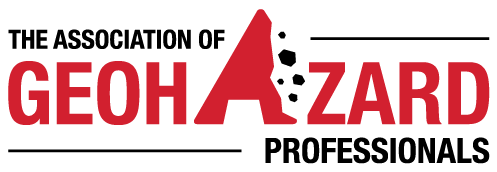geohazard, landslides, slopes, Transportation
3rd North American Symposium on Landslides (NASL) Offers Many Short Courses and Sponsorships
| NASL Short Courses Each course will offer .40 CEU credits. |
| SC #1: Synthetic Aperture Interferometric Georadar: Applied real-time monitoring and early detection of at-risk displacements
Time: Sunday, June 4, 8 am – Noon Co-Instructors: Clifford Preston, IDS and Steve Borron, Global Slope Monitoring
SC #2: Drones 101 – An introduction to Unmanned Aerial Systems and their Application to Land Development and Landslide Monitoring Time: Sunday, June 4, 8 am – Noon Co-Instructors: Steve Ellis and Chris Holmes, Langan Engineering & Environmental Services
SC #3: Debris Flow and Shallow Landslide Mitigation Time: Sunday, June 4, 8 am – Noon Description: This half-day course trains participants through lecture, case histories, and hands-on exercises. Principles covered: · An overview of the basic forces of debris flows that result in erosion and/or torrent channels · The basic theory behind a unique dimensioning software program · Use of DEBFLOW© dimensioning program for designing flexible debris flow barriers · Case studies working with the dimensioning program · This course is intended for consulting engineers, geologists, municipalities, public works, transportation agencies, as well as landscape architects and specialty construction contractors. This course is recommended to anyone with an undergraduate level of understanding of geology and/or geotechnical engineering and some experience with basic natural hazard mitigation concepts; or a Bachelor’s level education or higher in civil engineering, geotechnical engineering, geology, or related fields.
SC #4: Geotechnical Analysis and Monitoring Using 3D Laser Scanning Time: Sunday, June 4, 1 pm – 5 pm Instructor: Ben Haugen, Maptek Description: As ground-based 3D laser scanning technologies have developed, their use for geotechnical characterization and monitoring have greatly expanded. In this course, students will receive an introduction to 3D laser scanning technologies and their value in geotechnics. Students will collect and process laser scans, learn how to detect changes in surface position and volume, learn how to perform rock mass and kinematic analysis using laser scans, and be introduced to real-time laser-based slope monitoring tools. This course is designed for geotechnical professionals at all levels.
SC #5: Anchored Mesh Slope Stabilization Systems Time: Sunday, June 4, 1 pm – 5 pm Description: This half-day course trains participants through lecture, case histories, and hands-on exercises. Principles covered: · An overview of basic forces involved with shallow slope instabilities and deeper sliding surfaces · Use of RUVOLUM© dimensioning program for designing tensioned wire mesh systems and rock stabilization principles, including an overview of tensioned spiral rope net rock protection concepts · Modeling and field tests · Examination of designed systems and study of sample design problems using the program · This course is intended for consulting engineers, geologists, municipalities, public works, transportation agencies, as well as landscape architects and specialty construction contractors. This course is recommended to anyone with an undergraduate level of understanding of geology and/or geotechnical engineering and some experience with basic natural hazard mitigation concepts; or a Bachelor’s level education or higher in civil engineering, geotechnical engineering, geology or related fields.
SC #6: Analysis of Landslides: Shear Strengths, Testing, and Analyses Time: Sunday, June 4, 1 pm – 5 pm Instructor: Timothy D. Stark, Ph.D., P.E., D.GE, University of Illinois at Urbana-Champaign Description: This short course will provide attendees with current geotechnical engineering practices for landslide investigations and applicable shear strengths, shear strength testing, static and seismic stability analyses, and transient seepage analyses. In particular, the course will focus on selection of drained vs. undrained shear strengths for landslide analyses, measurement and selection of drained peak, fully softened, and residual shear strengths, understanding the importance of a cohesion value and stress dependent strength envelopes in stability analyses, and estimating pore-water pressures from seepage analyses for landslides.
Be sure to visit the NASL website for complete details! |
| Sponsorship Opportunities |
| Sponsorship is a great option to place your organization in front of attendees coming in from the National Weather Service, those in emergency management, various state Departments of Transportation, FHWA, USGS, state Geological Surveys, state Departments of Conservation, among other agencies/areas. |
| Each sponsorship includes:
· Your logo on the NASL meeting web page and the onsite program with abstracts · Your logo included in prominent signage at the meeting · Signage acknowledging your support during your sponsored event · One full meeting registration *(Not included with push message or shared sponsorships) · Acknowledgement during the Plenary Sessions · Your organization’s promotional materials in registration bags · Social Media Promotion with link to company |
| Want to try something a little bit different? Email contact@aegweb.org to discuss a personalized sponsorship. |
| View the Exhibitor/Sponsor prospectus for opportunities and register today! |
| Exhibit booths are going quickly! Position your company as a leader within the profession by signing up to exhibit and/or sponsor at the 3rd NASL today! |
| Included with your 8′ x 10′ booth is:
· Two full meeting registrations · One 6′ by 2′ skirted table, two chairs, one wastebasket and lettered company sign · Your logo on the NASL meeting page on the website and onsite program with abstracts · Electricity and complimentary wireless internet · Electronic copy of attendee list |
